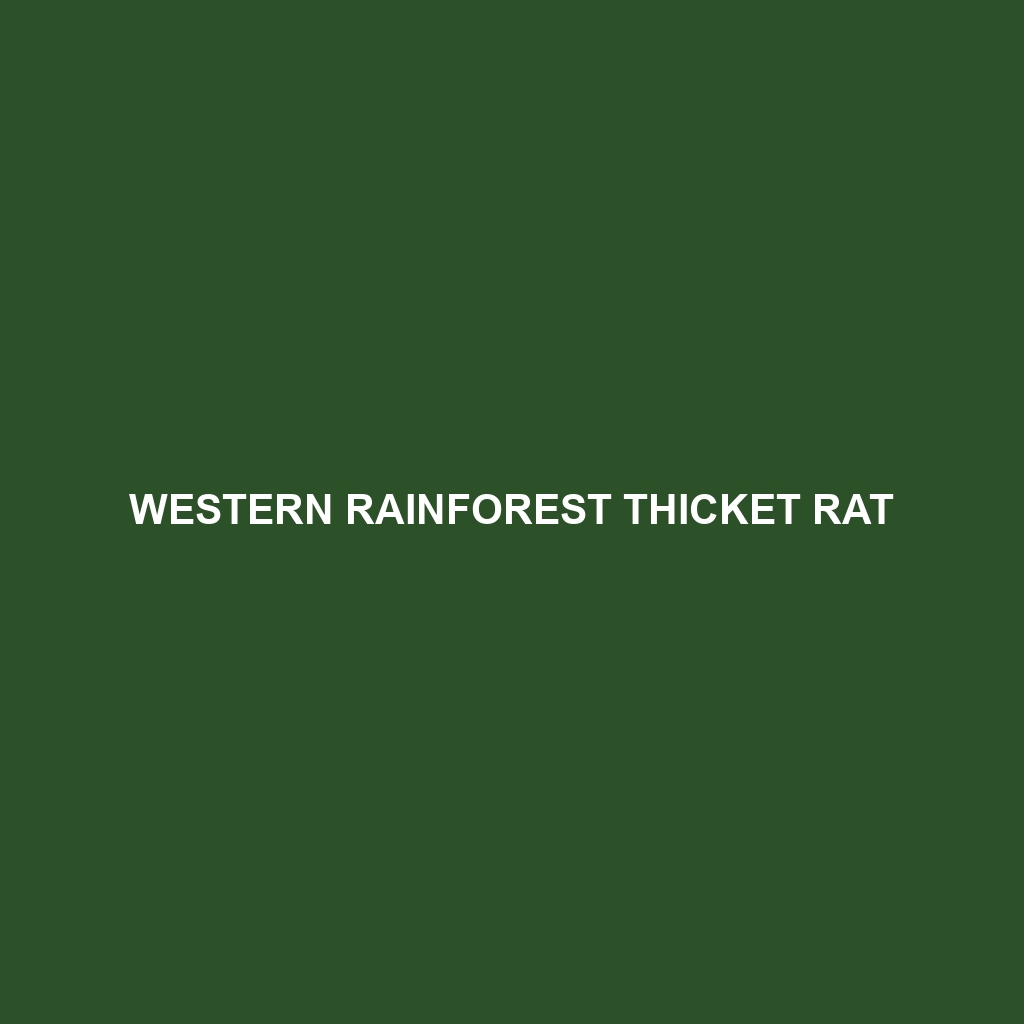Western Rainforest Thicket Rat
Common Name: Western Rainforest Thicket Rat
Scientific Name: Rattus fuscipes
Habitat
The Western Rainforest Thicket Rat primarily inhabits the lush temperate rainforests of southeastern Australia, particularly in areas such as Victoria and New South Wales. These rodents are often found in dense undergrowth and thickets, where the humidity and shelter from foliage provide a conducive environment for their survival. The combination of high rainfall and rich soil in these regions supports the vegetation that forms their crucial habitat.
Physical Characteristics
The Western Rainforest Thicket Rat is a medium-sized rodent, typically measuring between 25 to 30 centimeters in length, including its tail. Its fur is predominantly a rich brown or grey, with a lighter belly that aids in camouflage among the forest litter. Notably, this species exhibits a long, pointed snout and a bushy tail, which are distinctive features that differentiate it from other local rodent species. The thick, plush fur provides insulation against cooler temperatures common in rainforest habitats.
Behavior
This species is mainly nocturnal, exhibiting peak activity during the night when it forages for food. The Western Rainforest Thicket Rat is known for its agility and excellent climbing skills, often navigating the forest’s vertical landscape. It is a social creature, often found in pairs or small groups, communicating through vocalizations and scent marking to establish territory. During daylight hours, these rodents remain hidden within dense vegetation to avoid predators.
Diet
The diet of the Western Rainforest Thicket Rat mainly consists of a variety of seeds, fruits, and plant matter. These rodents play a significant role in their ecosystem by aiding in seed dispersion, which contributes to forest regeneration. Their feeding habits also involve foraging on fungi and invertebrates, showcasing their adaptability to the diverse food sources available in their rainforest habitat.
Reproduction
Breeding typically occurs in the warmer months, from late spring to early autumn. Female Western Rainforest Thicket Rats can produce multiple litters per year, with each litter containing approximately 3 to 6 offspring. Maternal care is significant as mothers nurse and protect their young until they are capable of independent foraging. The weaning period lasts for about four weeks, after which juvenile rats begin to explore their surroundings and learn foraging behaviors.
Conservation Status
The Western Rainforest Thicket Rat is currently classified as Vulnerable due to habitat loss and fragmentation driven by agricultural expansion and urban development. Conservation efforts are focused on habitat restoration and protection, allowing for the preservation of this unique species and its rainforest ecosystem.
Interesting Facts
One of the most fascinating aspects of the Western Rainforest Thicket Rat is its excellent climbing ability, which allows it to escape predators and access food sources not available to ground-dwelling animals. Additionally, their cohabitation with various symbiotic species showcases the interconnectedness of rainforest ecosystems.
Role in Ecosystem
The Western Rainforest Thicket Rat serves a crucial role in its ecosystem as both a prey species for larger predators like owls and snakes and a seed disperser for various plants. Their foraging activities enrich the forest floor, contributing to soil health and biodiversity, which underscores their importance within the tropical rainforest’s complex food web.
